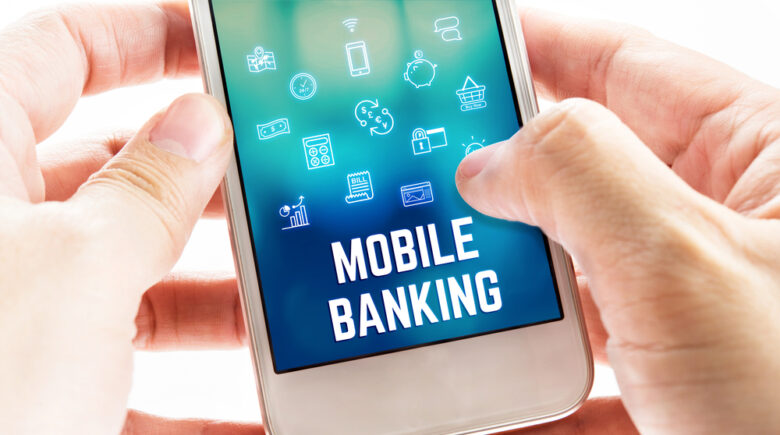Mobile banking refers to the use of mobile devices, such as smartphones or tablets, to access financial services offered by banks. This technology allows customers to manage their financial accounts and perform transactions such as balance inquiries, money transfers, bill payments, and more, without having to visit a physical branch.
Mobile banking is becoming increasingly popular globally, as it provides customers with greater convenience and flexibility in managing their finances. The growing adoption of smartphones and other mobile devices has made it possible for people to access financial services from anywhere, at any time, as long as they have an internet connection.
Mobile banking is being widely used in many countries, including the United States, Europe, and Asia. Banks in these regions are investing in mobile banking technologies and developing mobile apps to meet the growing demand for convenient and accessible financial services.
In addition to traditional banks, non-bank financial institutions such as fintech companies are also offering mobile banking services, providing customers with alternative options for managing their finances.
To sum up, mobile banking is a rapidly growing technology that allows customers to access financial services from their mobile devices. With its growing popularity and widespread use, mobile banking is changing the way people manage their finances, providing them with greater convenience and accessibility.
Mobile Banking in Numbers
As of 2021, mobile banking has become increasingly popular in America, with a growing number of consumers using their smartphones and other mobile devices to manage their finances. According to recent surveys and studies:
- Adoption Rate: Over 75% of American adults have used mobile banking services, with over 50% using them regularly.
- Popular Services: The most popular mobile banking services in America include checking account balances, transferring money, and depositing checks.
- Increased Usage: The use of mobile banking has increased rapidly in recent years, with over 20% of users reporting that they use mobile banking services more frequently than they did just two years ago.
- Age Demographics: Mobile banking is most popular among younger generations, with over 80% of adults aged 18-29 using mobile banking services.
- Increased Security: The security of mobile banking has improved in recent years, with banks and financial institutions investing in advanced security measures to protect customers’ personal and financial information.
And below are the statistics for mobile banking outside of US. Let’s take a closer look. Mobile banking has become increasingly popular globally, with many consumers using their smartphones and other mobile devices to manage their finances. According to recent surveys and studies:
- Global Adoption: Over 50% of adults globally have used mobile banking services, with usage being higher in developing countries.
- Popular Services: The most popular mobile banking services globally include checking account balances, transferring money, and paying bills.
- Age Demographics: Mobile banking is most popular among younger generations, with over 60% of adults aged 18-29 using mobile banking services.
- Increased Usage: The use of mobile banking has increased rapidly in recent years, with over 30% of users reporting that they use mobile banking services more frequently than they did just two years ago.
- Increased Security: The security of mobile banking has improved globally, with banks and financial institutions investing in advanced security measures to protect customers’ personal and financial information.
In summary, mobile banking has become a popular and convenient way for consumers globally to manage their finances, with usage being higher in developing countries and among younger generations. The use of mobile banking is expected to continue to grow in the coming years as more people adopt smartphones and other mobile devices.
Trends and Predictions for Mobile Banking
The future of mobile banking is likely to be influenced by a range of technological, social, and economic trends and factors. Here are some of the key trends and predictions for the future of mobile banking:
Increased Adoption of Biometric Security: Biometric authentication methods, such as fingerprint scanning and facial recognition, are expected to become more widespread in mobile banking as a means of enhancing security. This trend is likely to increase consumer confidence in the safety and security of their financial transactions and personal data.
Growing Use of AI and ML: The use of artificial intelligence (AI) and machine learning (ML) is expected to increase in mobile banking, enabling banks and financial institutions to offer more personalized and intuitive services to customers. For example, AI-powered chatbots and virtual assistants can help customers with account management and financial planning.
Expansion of Open Banking: Open banking, where customers can access financial services from multiple providers through a single platform, is expected to continue to expand in the future. This trend is likely to provide customers with greater choice, control, and convenience in managing their finances.
Growth of Contactless Payments: The popularity of contactless payments, such as tap-and-go payments using smartphones or wearables, is expected to grow in the future. This trend is likely to be driven by increased consumer demand for fast and convenient payment methods and the continued growth of mobile banking.
Emergence of New Payment Technologies: New payment technologies, such as blockchain and cryptocurrencies, are expected to emerge in the future, offering customers new and innovative ways to manage their finances. These technologies have the potential to transform the way financial transactions are conducted and offer greater security, efficiency, and privacy.
Overall, the future of mobile banking is likely to be shaped by a range of trends and factors, including increased adoption of biometric security, growing use of AI and ML, expansion of open banking, growth of contactless payments, and the emergence of new payment technologies. These trends are likely to provide customers with greater convenience, choice, and control in managing their finances.



